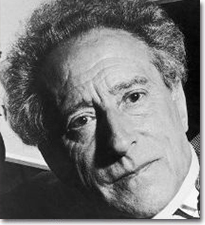Jean COCTEAU
Born in Maisons-Laffitte, July 5, 1889, Jean Cocteau is an artist who has evolved in various artistic fields. In 1909 he published his first poems and became a leading artistic figure in Paris. Hired as a paramedic during the First World War, he became friends with Apollinaire. The inter-war period is for Jean Cocteau, the height of his fame, a period of intense creativity, under the sign of the vanguard. He collaborated with such musicians as Erik Satie (Parade, 1917) and Darius Milhaud, as well as with famous painters. He also held an important place in theater, including The Bride of the Eiffel Tower (1924), The Human Voice (1930), The Infernal Machine (1941), The Eagle Has Two Heads (1946), Bacchus (1952). The cinema also attracted Jean Cocteau, who gave to cinema, films and striking scenarios, among which The Blood of a Poet (1930), The Eternal Return (1943), Beauty and the Beast (1945), Orpheus (1950), The Testament of Orpheus (1960).
Jean Cocteau was elected as a member of the Francés Academy March 3, 1955.


